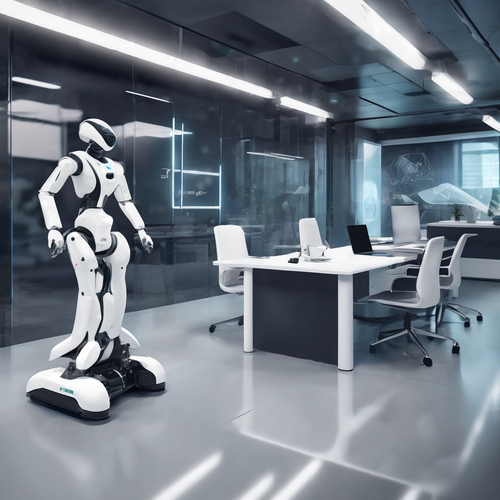Risk Assessment: Creating a Safe Cleaning Environment
In the world of cleaning services, the irony is palpable. We scrub, sanitize, and disinfect in a frenzy to create sparkling spaces, yet often overlook the hidden hazards that coexist alongside our efforts. The very tools designed to enhance cleanliness can pose unspoken risks to both workers and workplaces. But the question looms large: how do we assess these risks and forge a truly safe cleaning environment? 🧼
The Perils of Neglecting Risk Assessment
One might quip that cleaning is the art of creating beauty through chaos, but without systematic risk assessment, that beauty can be marred by accidents. In the cleaning industry, injuries are as common as dust bunnies on a neglected shelf. According to the Bureau of Labor Statistics, the cleaning industry faces one of the highest rates of workplace injuries, ranging from slips, trips, and falls to chemical exposure and ergonomic strains. This underlines a stark truth: without a comprehensive risk assessment plan, we risk more than just a dirty floor — we jeopardize lives.
Identifying Hazards: From the Obvious to the Obscure
A successful risk assessment process begins with identifying potential hazards—abundant as mushrooms after rain:
- Chemical Hazards: The array of cleaning agents, while powerful in their cleansing abilities, often contain volatile compounds that can irritate skin, lungs, and eyes. Mixing certain chemicals can create toxic fumes, a dangerous cocktail that tells a morbid joke about “cleaning out the air.” 🌪️
- Physical Hazards: Cleaning staff often lug heavy equipment or navigate slippery surfaces. Imagine if your ski instructor arrived for a lesson not on the slopes, but wobbling on a soapy floor—hazardous, indeed!
- Ergonomic Hazards: The repetitive motion of scrubbing, bending, and lifting can lead to chronic pain. Workers become living metaphors for frazzled rubber bands—stretched too far for too long.
Conducting the Assessment: A Proactive Approach
To mitigate risks in cleaning environments, one must engage in a thoughtful and methodical assessment process:
- Hazard Identification: Walk through the environment systematically, taking note of possible risks from every angle. This should be as rigorous as a school inspection, where every dusty corner—and potential hazard—receives scrutiny.
- Risk Evaluation: Analyze the likelihood of hazards leading to accidents. This part is akin to playing detective—assessing which risks could lead to serious consequences and planning accordingly.
- Implement Control Measures: From safeguarding against chemical exposure with proper PPE (Personal Protective Equipment) like gloves and masks to training team members on safe lifting techniques, these steps resemble crafting an intricate symphony where every note must harmonize for safety.
The Art of Training: Knowledge is Safety
Training staff in risk management and safety protocols can feel like teaching a toddler to balance on a bike without training wheels. However, equip them with the right knowledge, and they will manage hazards with the dexterity of seasoned acrobats. Continuous education on the safe handling of equipment, chemical knowledge, and emergency procedures can significantly reduce workplace accidents, transforming employees into safety ambassadors.
“A clean workplace is a safe workplace. Ignoring risks is like driving a car without checking the brakes—eventually, you’ll crash,” cautions Dr. Martin Green, a workplace safety expert.
Safety Culture: Building Commitment Through Accountability
Let’s not forget: a solid risk assessment plan is not a one-time affair. Cultivating a culture of safety means promoting constant vigilance within the team. Employees should feel empowered to voice concerns, report unsafe practices, and suggest improvements, emphasizing that safety is a shared responsibility—a unified force like a cleaning army, striving toward a common goal of cleanliness and security. 🛡️
Because Safety Is a Journey, Not a Destination
In an industry where the primary goal is to create an immaculate environment, maintaining a culture of safety can feel like sweeping sand off a beach—a never-ending task. Yet, the consequences of ignoring this journey are too grave to overlook.
By conducting thorough risk assessments, providing proper training, and fostering an environment of accountability, the cleaning industry can ensure that every sparkle not only dazzles but does so in a safe and secure setting. Together, as cleaners armed with awareness, we can transform our workspaces from risk-laden zones to shining beacons of safety and efficiency. And isn’t that a glowing irony worth celebrating? 🌟
